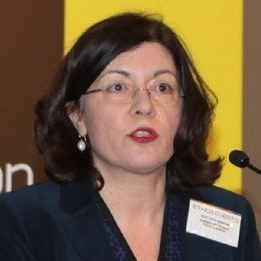Selective Laser Sintering (SLS) of Materials
A special issue of Materials (ISSN 1996-1944). This special issue belongs to the section "Manufacturing Processes and Systems".
Deadline for manuscript submissions: closed (31 March 2019) | Viewed by 36239
Special Issue Editors
Interests: laser-induced forward transfer; dual-laser bioprinting; laser materials microprocessing
Special Issues, Collections and Topics in MDPI journals
Special Issue Information
Dear Colleagues,
Selective Laser Sintering (SLS) has been effectively utilized over the past 15 years as a microcuring process for the fabrication of solid patterns with supreme electrical and mechanical properties. Unlike conventional sintering in an oven, which affects the entirety of a sample, SLS is a digital process offering a high resolution, as the laser irradiated heat-affected zone is extremely short and, therefore, associated thermal damage to the substrate or adjacent layers is substantially reduced.
There are many SLS processes and applications. The field is rapidly expanding to novel areas: The advent of printed and flexible electronics has brought SLS into focus once more, as a process capable of providing high resolution micropatterns of electronic components and circuits without incurring serious damage on the sensitive substrates involved in this technology. This new application of SLS dictated the modification of several key-features of the conventional SLS process; lower power and ultra-short pulsed lasers have emerged as the best option for producing high resolution features with minimized heat affected zones and maximal selectivity. In line with this manufacturing trend, novel nanomaterials with very low sintering temperatures have been developed in ink or paste form, including metal (Ag, Cu), metal oxide (ZnO, ITO, CuO), composites (AZO, solder paste) and other materials (graphene oxide, CNTs).
Flexible electronics and overall the additive manufacturing of microelectronics rely on the efficiency of laser sintering. It is substantial for the field to clarify important issues such as laser matter interaction for pulse widths at the fs to ns regime, understand the underlying mechanisms of sintering and melting owing to the accumulative heating of high repetition rate pulses and to construct time- dependent theoretical models. The focus of this Special Issue will be on advancements in the SLS process itself for primarily flexible electronics and other emerging relevant applications (e.g. printed sensors), without excluding reports on SLS for additive manufacturing and novel materials developed specifically for laser sintering.
It is my pleasure to invite you to submit a manuscript to this Special Issue. Full papers, communications, and reviews are all welcome.
Prof. Ioanna ZergiotiProf. Costas P. Grigoropoulos
Guest Editors
Manuscript Submission Information
Manuscripts should be submitted online at www.mdpi.com by registering and logging in to this website. Once you are registered, click here to go to the submission form. Manuscripts can be submitted until the deadline. All submissions that pass pre-check are peer-reviewed. Accepted papers will be published continuously in the journal (as soon as accepted) and will be listed together on the special issue website. Research articles, review articles as well as short communications are invited. For planned papers, a title and short abstract (about 100 words) can be sent to the Editorial Office for announcement on this website.
Submitted manuscripts should not have been published previously, nor be under consideration for publication elsewhere (except conference proceedings papers). All manuscripts are thoroughly refereed through a single-blind peer-review process. A guide for authors and other relevant information for submission of manuscripts is available on the Instructions for Authors page. Materials is an international peer-reviewed open access semimonthly journal published by MDPI.
Please visit the Instructions for Authors page before submitting a manuscript. The Article Processing Charge (APC) for publication in this open access journal is 2600 CHF (Swiss Francs). Submitted papers should be well formatted and use good English. Authors may use MDPI's English editing service prior to publication or during author revisions.
Keywords
- lases sintering
- flexible electronics
- nanoinks
- nanopastes
- micropatterns
- electronic circuits







